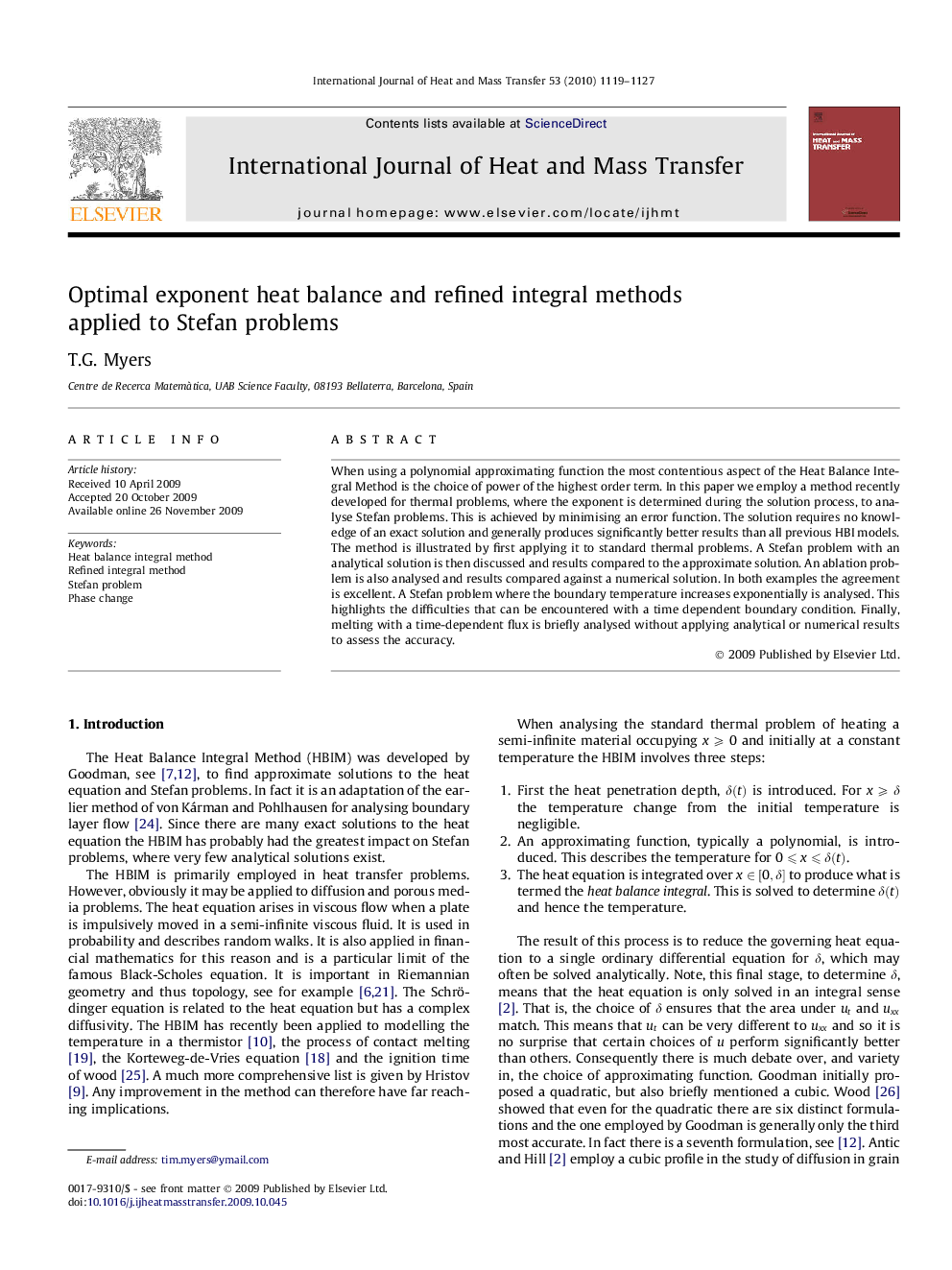| Article ID | Journal | Published Year | Pages | File Type |
|---|---|---|---|---|
| 658867 | International Journal of Heat and Mass Transfer | 2010 | 9 Pages |
When using a polynomial approximating function the most contentious aspect of the Heat Balance Integral Method is the choice of power of the highest order term. In this paper we employ a method recently developed for thermal problems, where the exponent is determined during the solution process, to analyse Stefan problems. This is achieved by minimising an error function. The solution requires no knowledge of an exact solution and generally produces significantly better results than all previous HBI models. The method is illustrated by first applying it to standard thermal problems. A Stefan problem with an analytical solution is then discussed and results compared to the approximate solution. An ablation problem is also analysed and results compared against a numerical solution. In both examples the agreement is excellent. A Stefan problem where the boundary temperature increases exponentially is analysed. This highlights the difficulties that can be encountered with a time dependent boundary condition. Finally, melting with a time-dependent flux is briefly analysed without applying analytical or numerical results to assess the accuracy.
